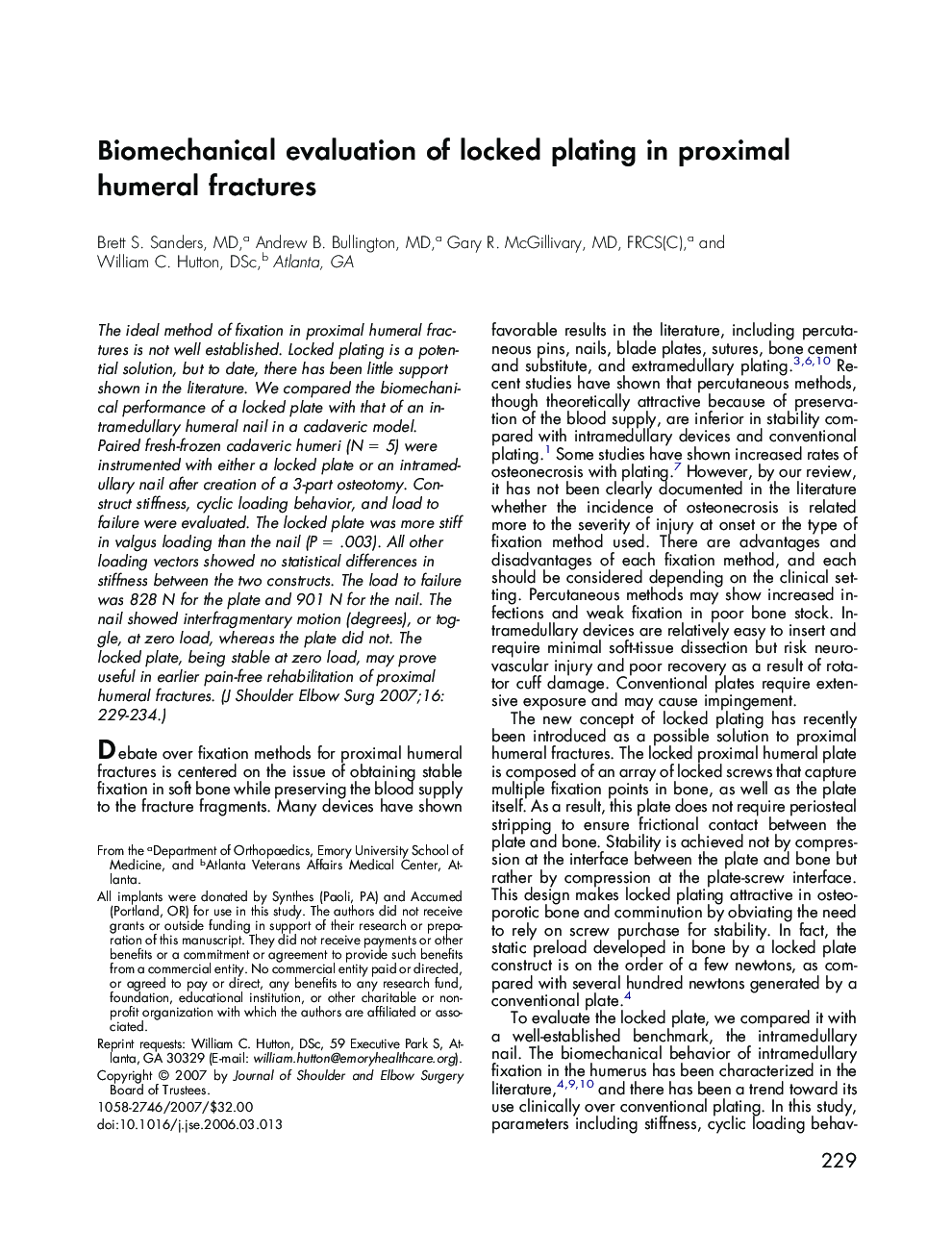| Article ID | Journal | Published Year | Pages | File Type |
|---|---|---|---|---|
| 4076275 | Journal of Shoulder and Elbow Surgery | 2007 | 6 Pages |
The ideal method of fixation in proximal humeral fractures is not well established. Locked plating is a potential solution, but to date, there has been little support shown in the literature. We compared the biomechanical performance of a locked plate with that of an intramedullary humeral nail in a cadaveric model. Paired fresh-frozen cadaveric humeri (N = 5) were instrumented with either a locked plate or an intramedullary nail after creation of a 3-part osteotomy. Construct stiffness, cyclic loading behavior, and load to failure were evaluated. The locked plate was more stiff in valgus loading than the nail (P = .003). All other loading vectors showed no statistical differences in stiffness between the two constructs. The load to failure was 828 N for the plate and 901 N for the nail. The nail showed interfragmentary motion (degrees), or toggle, at zero load, whereas the plate did not. The locked plate, being stable at zero load, may prove useful in earlier pain-free rehabilitation of proximal humeral fractures.
